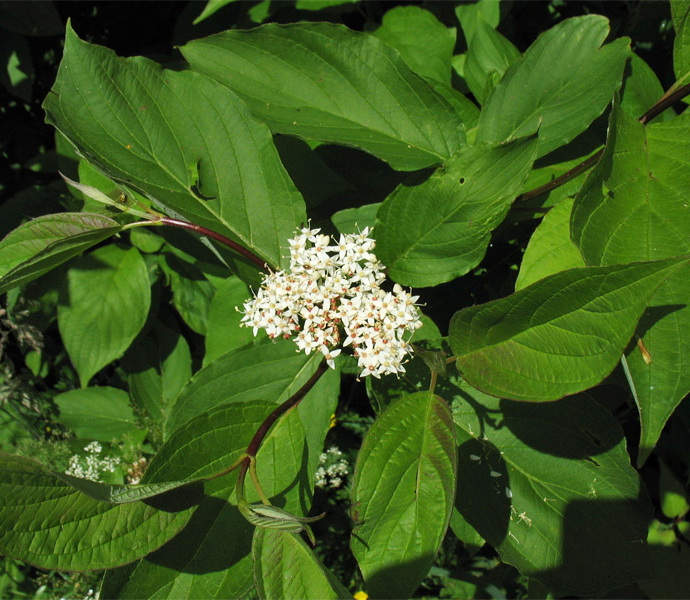PREPARATIVE ISOLATION OF HYDROLYZABLE TANNINS FROM LEAVES OF CORNUS SERICEA L. USING TELLIMAGRANDIN I AS AN EXAMPLE
UDK 615.322
Abstract
Hydrolysable tannins are a promising class of natural compounds for medical applications. They have found many pharmacological activities, the most promising of which is antiviral. The difficulty of obtaining pure tannins is one of the main problems in their study. A complex mixture of high molecular weight homologues and isomers is obtained as a result of the biosynthesis of tannins. Some of the tannins additionally complicate the preparative separation significantly because they have a non-standard broad peak shape, which contaminates the nearest peaks when collecting eluates. The rapid change in conformation on the chromatographic column and in solution is the reason.
The paper describes a complex method for the isolation of hydrolyzable tannins from the leaves of Cornus sericea L. The method includes obtaining an extract from plant materials, its fractionation on a Sephadex LH-20 column, and isolation of individual hydrolyzable tannins using preparative high-performance liquid chromatography with a UV detector on a Silasorb C18 column. The second stage includes purification on a Luna® C18 column. Ultra-performance liquid chromatography with diode and mass spectrometric detector and 1H-NMR spectroscopy were used to identify the isolated hydrolysable tannins and evaluate their purity. Using isolated tellimagrandin I as an example, the features of the chromatographic behavior of hydrolysable tannins with a free hydroxyl group at the anomeric carbon atom of glucose are shown. This type of substances have two isomers and simultaneously exist in α- and β-forms.
Downloads
Metrics
References
Moilanen J., Koskinen P., Salminen J.P. Phytochemistry, 2015, vol. 116, pp. 188–197. DOI: 10.1016/j.phytochem.2015.03.002.
Moilanen J., Sinkkonen J., Salminen J.P. Chemoecology, 2013, vol. 23, no. 3, pp. 165–179. DOI: 10.1007/s00049-013-0132-3.
Aires A. Tannins: Structural Properties, Biological Properties and Current Knowledge. IntechOpen, 2020, 148 p. DOI: 10.5772/intechopen.80170.
Vilhelmova-Ilieva N., Galabov A.S., Mileva M. Tannins-Structural Properties, Biological Properties and Current Knowledge. IntechOpen, 2019. DOI: 10.5772/intechopen.86490.
Sieniawska E. Natural Product Communications, 2015, vol. 10, no. 11, pp. 1877–1884, DOI: 10.1177/1934578X1501001118.
Patent 2098111 (RU). 1997. (in Russ.).
Ferubko Ye.V., Trumpe T.Ye., Kurmanova Ye.N., Kolkhir V.K., Sidel'nikova G.F., Sidel'nikov N.I., Gromakova A.I. Voprosy biologicheskoy, meditsinskoy i farmatsevticheskoy khimii, 2016, vol. 19, no. 6, pp. 11–15. (in Russ.).
Vichkanova S.A., Krutikova N.M. Khimiya, tekhnologiya, meditsina, 2006, pp. 384–391. (in Russ.).
Caprarulo V., Giromini C., Rossi L. Animal, 2021, vol. 15, no. 1, article 100064. DOI: 10.1016/j.animal.2020.100064.
Miele S. et al. Tannins-Structural Properties, Biological Properties and Current Knowledge. IntechOpen, 2019, DOI: 10.5772/intechopen.86610.
Khmyrov A.V., Gorshkov G.I., Yakovleva Ye.G. Vestnik Altayskogo gosudarstvennogo agrarnogo universiteta, 2016, vol. 9, no. 143, pp. 137–142. (in Russ.).
Lotfi R. Letters in Applied Microbiology, 2020, vol. 71, no. 5, pp. 466–478. DOI: 10.1111/lam.13346.
Baihaqi Z.A. et al. Adv. Anim. Vet. Sci., 2022, vol. 10, no. 3, pp. 599–606. DOI: 10.17582/journal.aavs/2022/10.3.599.606.
Dreger M. et al. Herba Polonica, 2020, vol. 66, no. 1, pp. 52–64. DOI: 10.2478/hepo-2020-0001.
Chen Y. et al. Journal of agricultural and food chemistry, 2019, vol. 67, no. 25, pp. 7025–7039. DOI: 10.1021/acs.jafc.9b02293.
Abid M., Yaich H., Cheikhrouhou S., Khemakhem I., Bouaziz M., Attia H., Ayadi M.A. Journal of food science and technology, 2017, vol. 54, no. 9, pp. 2890–2901. DOI: 10.1007/s13197-017-2727-0.
Granica S., Czerwińska M., Piwowarski J., Ziaja M., Kiss A. Journal of agricultural and food chemistry, 2013, vol. 61, no. 4, pp. 801–810. DOI: 10.1021/jf304002h.
Aksenov A.A., Krol' T.A. Sovremennyye tendentsii razvitiya tekhnologiy zdorov'yesberezheniya: sbornik materialov IX Mezhdunarodnaya nauchnaya konferentsiya molodykh uchonykh. [Modern trends in the development of health-saving technologies: Collection of materials IX International Scientific Conference of Young Scientists]. Moscow, 2021, pp. 152–160. DOI: 10.52101/9785870191027_2021_152. (in Russ.).
Aksenov A.A., Krol' T.A., Baleyev D.N., Osipov V.I. Fenol'nyye soyedineniya: fundamental'nyye i prikladnyye aspekty: sbornik materialov XI Mezhdunarodnogo simpoziuma. [Phenolic compounds: fundamental and applied as-pects: Collection of materials of the XI International Symposium]. Moscow, 2022, p. 69. (in Russ.).
Lee S.H. et al. Phytochemistry, 1990, vol. 29, no. 11, pp. 3621–3625. DOI: 10.1016/0031-9422(90)85288-Q.

Copyright (c) 2024 chemistry of plant raw material

This work is licensed under a Creative Commons Attribution 4.0 International License.

This work is licensed under a Creative Commons Attribution 4.0 International License.
The authors, which are published in this journal, agree to the following conditions:
1. Authors retain the copyright to the work and transfer to the journal the right of the first publication along with the work, at the same time licensing it under the terms of the Creative Commons Attribution License, which allows others to distribute this work with the obligatory indication of the authorship of this work and a link to the original publication in this journal .
2. The authors retain the right to enter into separate, additional contractual agreements for the non-exclusive distribution of the version of the work published by this journal (for example, to place it in the university depository or to publish it in a book), with reference to the original publication in this journal.
3. Authors are allowed to post their work on the Internet (for example, in a university repository or on their personal website) before and during the review process of this journal, as this may lead to a productive discussion, as well as more links to this published work.











